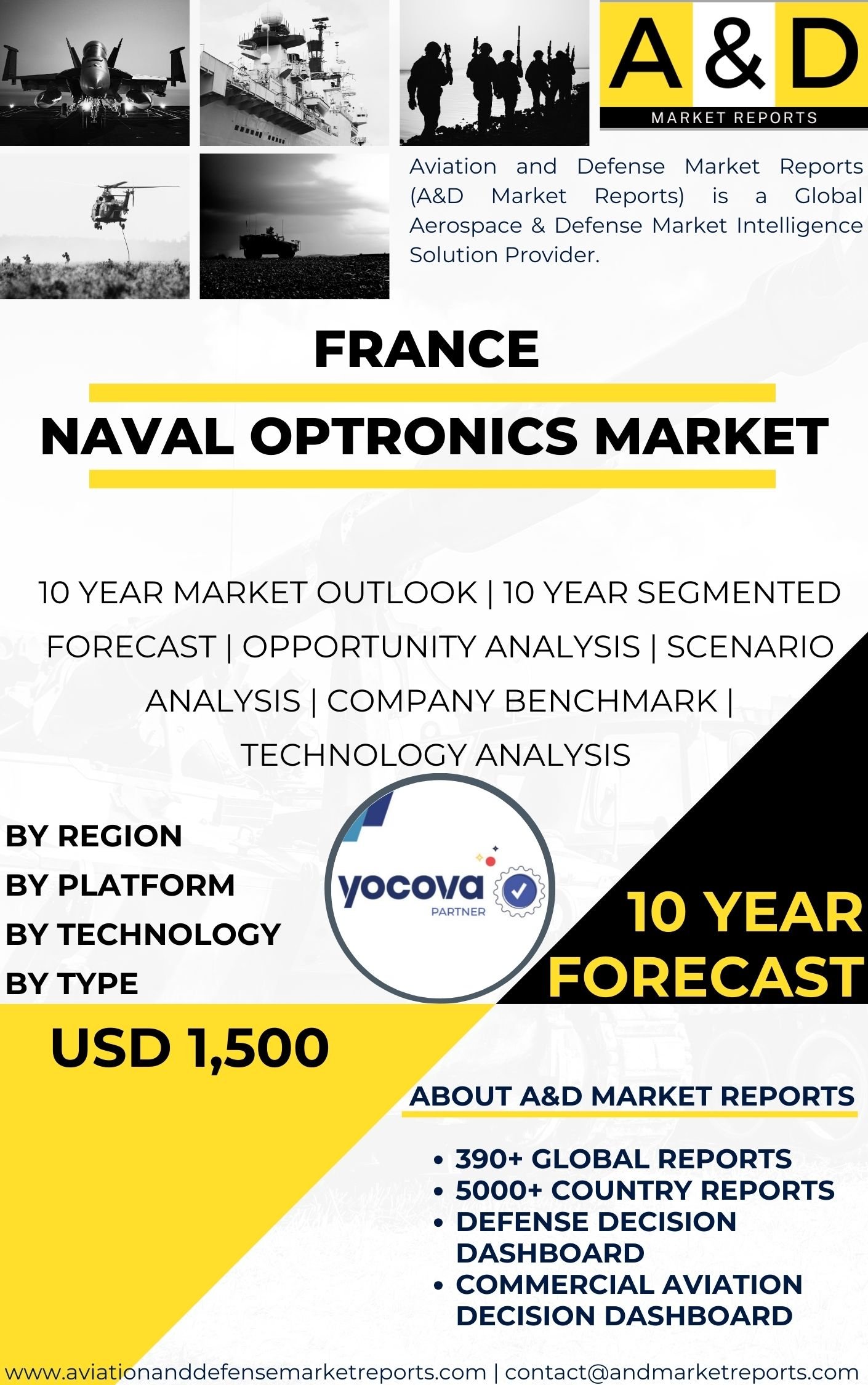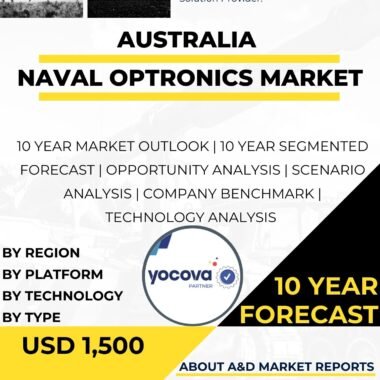Description
The naval optronics market in France holds a position of profound significance within the country?s maritime defense and security framework, playing a central role in the surveillance, targeting, navigation, and situational awareness capabilities of naval vessels and submarines. Optronics refers to advanced electro-optical systems that exploit visible light, infrared, and thermal imaging technologies to provide precise vision and detection in diverse maritime environments. For France, whose naval forces operate across global seas, safeguarding strategic interests, and upholding commitments as a nuclear power with blue-water capabilities, naval optronics are indispensable. They provide the eyes of the fleet, offering navigation in peacetime missions, detection in littoral zones, and target acquisition in combat scenarios. These systems also enhance interoperability between surface vessels, submarines, helicopters, and coastal command centers, ensuring cohesive responses in maritime defense operations. In France, where industry and defense policies emphasize sovereignty and technological independence, the ability to design, develop, and integrate advanced naval optronics has become a matter of both operational necessity and industrial strength.
The historical development of naval optronics in France is deeply intertwined with the broader evolution of its naval doctrines and industrial base. France, as one of the few nations to independently operate a nuclear triad and a technologically advanced navy, has consistently invested in maritime surveillance and targeting technologies. Early naval optics were rudimentary, relying heavily on periscopes and manually operated sensors. Over decades, as threats multiplied and technologies advanced, France moved rapidly toward integrating digital imaging systems, infrared sensors, and stabilized platforms into its naval vessels. Driven by the rise of asymmetric maritime threats, piracy, and the strategic competition of global powers, the need for reliable detection and identification tools accelerated. French defense industries, collaborating with naval authorities, invested in indigenous development pathways to reduce dependence on foreign suppliers and ensure that naval optronics would keep pace with new-generation frigates, nuclear submarines, and aircraft carrier strike groups. Today, French naval optronics are considered among the most advanced globally, with systems designed to work seamlessly across multiple maritime environments, from open oceans to shallow littoral zones, where detection is challenging.
The defining characteristics of the French naval optronics market are precision, resilience, modularity, and integration. Precision refers to the ability of sensors to detect, track, and identify targets at long range under a variety of environmental conditions, including poor visibility, sea clutter, and adverse weather. Resilience lies in ensuring that systems operate reliably despite vibration, shock, and electromagnetic interference associated with naval environments, along with durability to function under high-pressure conditions on submerged submarines. Modularity is another core feature, as France designs its optronic platforms to be scalable across vessels of different sizes and classes, enabling adaptation rather than developing one-size systems. Integration defines the ecosystem?s spirit: naval optronics are not standalone instruments but parts of larger combat management systems, where data is fused from radar, sonar, and optronics to provide a coherent operational picture. By excelling in integration, French industries ensure that optronics enhance the efficiency of crew performance and fleet coordination, translating technological precision directly into tactical advantage.
France?s naval optronics market is driven by major defense contractors and advanced electronics firms, alongside specialist companies focused entirely on electro-optical solutions. Global defense corporations with deep roots in avionics and sensor technologies have extended their expertise to the maritime domain, providing high-performance imaging, targeting, and surveillance solutions tailor-made for naval applications. Specialized firms focus specifically on niche areas such as periscopes for submarines, thermal imaging systems for surface ships, and infrared search-and-track units designed to detect stealth aircraft or incoming missiles. Government research institutions and laboratories provide additional momentum, ensuring that France remains aligned with global advances in material sciences, sensor miniaturization, and data analytics that continuously redefine optronics. For submarines in particular, the replacement of traditional periscope systems with modern photonics masts has highlighted France?s ability to lead innovation at the global level, contributing both to operational safety and future export opportunities. This layered industrial base, connecting major firms with smaller high-technology enterprises, ensures that France?s naval optronics remain agile, innovative, and sovereign.
The economic and strategic significance of this market is manifold. Economically, naval optronics underpin one of France?s most critical export sectors, as advanced frigates, submarines, and patrol systems sold internationally are often equipped with French-developed sensors. By tying optronics to naval platforms, France provides defense partners with comprehensive solutions, securing long-term relationships and enhancing the global credibility of its maritime technologies. Domestically, investment in optronics supports thousands of jobs in precision engineering, optical sciences, and advanced electronics manufacturing, contributing directly to industrial sovereignty. Strategically, the systems are indispensable for France?s deterrence capabilities. Submarine fleets depend on photonics masts and optronic sensors for covert navigation, while surface fleets rely on infrared and visual sensors for target discrimination and threat warning, essential aspects of modern naval warfare. In peacetime, optronics enhance France?s ability to monitor territorial waters and exclusive economic zones, critical for a nation with substantial overseas territories and maritime responsibilities. Thus, the market plays a crucial national security role that extends beyond combat into law enforcement and maritime governance.
The market is currently evolving under several key trends. One of the most important is digital transformation, whereby naval optronics are increasingly embedded within broader networked platforms that enable shared situational awareness across vessels and command centers. Artificial intelligence is being adopted to automate detection, reduce operator workload, and provide faster decision-making support, particularly in target identification where human operators may be overwhelmed by the volume of data. Innovations in sensor fusion are allowing optronic units to work seamlessly with radar and sonar systems, creating a multi-layered defense where optical systems detect objects radar cannot, thus plugging gaps in surveillance networks. Another defining trend is the miniaturization of optronic payloads, enabling smaller naval platforms, unmanned surface vessels, and autonomous underwater vehicles to benefit from the same advanced detection once reserved for larger ships. As in many aspects of French defense, sustainability influences the market, with systems designed for lower energy consumption, longer lifespans, and adaptability to new-generation platforms in order to reduce overall lifecycle costs.
Security has become an increasingly dominant theme in the French naval optronics market. Given their role in detecting stealth threats, submarines, and missiles, these systems hold high strategic importance, and the government enforces strict controls over their design, export, and integration. Cybersecurity is critical, as modern optronics are not merely optical sensors but digital systems vulnerable to interception, hacking, or manipulation if not adequately protected. France has prioritized digital sovereignty, ensuring that sensitive software codes, data analytics platforms, and core architectures remain under national control. Export to international partners is carefully managed, ensuring that technologies retain a balance between strengthening partnerships and safeguarding sensitive national capabilities. This emphasis on security and sovereignty mirrors the wider French doctrine, where strategically essential technologies are never wholly outsourced, preserving the ability to project power independently.
Looking ahead, the French naval optronics market is poised for sustained growth and innovation. Advanced programs involving next-generation submarines, aircraft carriers, and frigates will require even more sophisticated optronic systems, capable of detecting threats earlier and in more contested environments. Emerging challenges such as hypersonic weapons, increasingly cluttered littoral zones, and stealth-enhanced naval platforms will drive demand for optronics that integrate thermal, optical, and digital domains at once. The continued rise of unmanned maritime platforms will expand the requirement for smaller, more energy-efficient systems tailored to these new platforms. Internationally, French naval optronics are likely to maintain their appeal, especially as global navies modernize fleets and seek proven, reliable, and versatile technology solutions. By combining scientific innovation with industrial resilience and strict protection of sovereignty, France?s naval optronics sector exemplifies its broader strategy in defense: a fusion of national independence, global competitiveness, and forward-thinking technological advancement. In this way, naval optronics in France not only safeguard ships at sea but also symbolize the precision and foresight that keep the French navy and its industry at the forefront of global maritime power.




